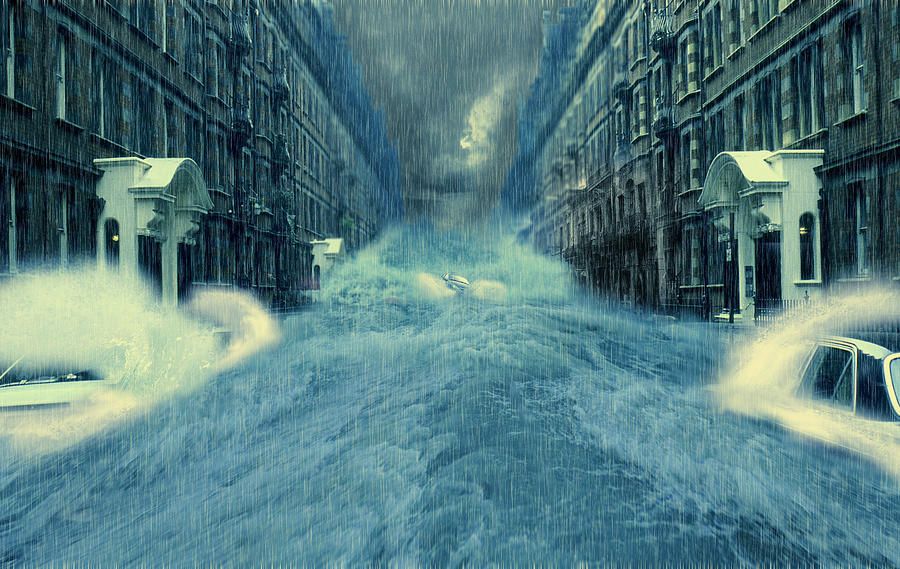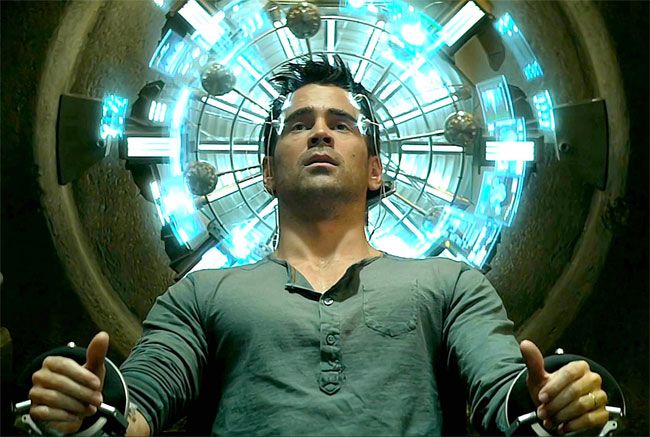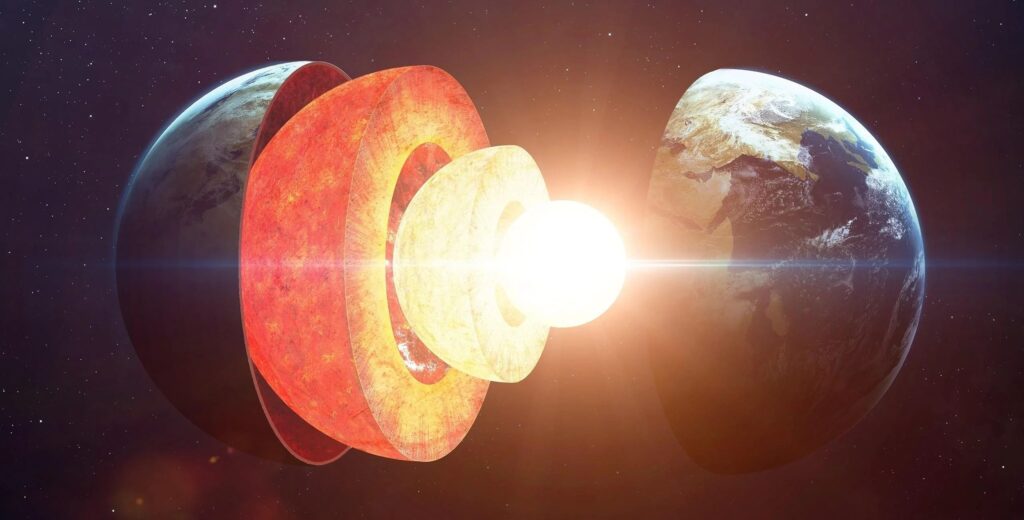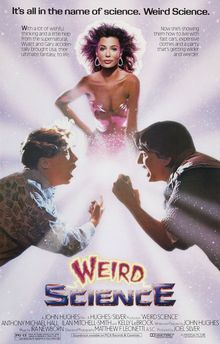Science fiction films, superhero sagas, and action-packed blockbusters offer an undeniable thrill, transporting us to worlds where the impossible seems within reach. We cheer for heroes, marvel at alien technologies, and witness cataclysmic events that push the boundaries of our imagination. Indeed, part of the genre’s enduring appeal lies in its willingness to bend, and sometimes outright break, the established rules of science. Yet, for all their cinematic glory, some of these beloved films venture so far into the realm of the improbable that they leave scientists—and anyone with a keen eye for scientific principles—cringing.
It’s a delicate balance, this dance between creative license and scientific fidelity. While we readily accept certain fantastical elements as part of the narrative contract, there comes a point where the exaggerations become so profound, the logical inconsistencies so glaring, that they detach from any semblance of reality. This isn’t merely about nitpicking; it’s about exploring the fascinating chasm between Hollywood’s boundless creativity and the unwavering laws of physics, biology, and astronomy that govern our universe. We understand that films prioritize entertainment, and often, skipping over inconvenient scientific details can make for a more compelling story. But what happens when the science isn’t just simplified, but fundamentally butchered?
In this deep dive, we’re not just pointing out errors; we’re analyzing the implications of these cinematic scientific blunders, drawing on expert perspectives and the fundamental principles of various scientific disciplines. From the intricacies of the human brain to the devastating power of natural disasters and nuclear explosions, we’ll dissect some of the most iconic sci-fi moments that left the scientific community scratching their heads. Prepare to have your perceptions challenged as we journey through 14 films, ranking them by their increasingly baffling levels of scientific inaccuracy, beginning with those that started the trend of raising an eyebrow or two.

1. Lucy (2014): Unlocking the Non-Existent Brain Capacity
The 2014 film *Lucy*, starring Scarlett Johansson, posits a captivating premise: what if humans could access and utilize more than the fabled 10% of their brain capacity? The movie builds its entire narrative around this idea, depicting a woman who, after an accidental overdose of a powerful synthetic drug, rapidly gains superhuman abilities, from telekinesis to instantaneous knowledge acquisition, all attributed to her escalating brain utilization. It’s an intriguing concept for a sci-fi thriller, certainly, but one that unfortunately rests upon a foundational scientific myth.
The notion that humans only use a mere fraction of their brains has been “invalidated many-a-times by renowned scholars and neuroscientists,” according to scientific consensus. In reality, neuroscience confirms that people use virtually every part of the brain, and most of it remains active all the time, even during sleep. Different regions of the brain are responsible for various functions, and while not all areas might be firing at peak capacity simultaneously, the entire organ is essential and utilized for daily cognitive processes, sensory perception, and motor control.
The film’s dramatic progression—where an ingested drug unlocks higher brain percentages, bestowing extraordinary powers—is, quite frankly, “outrageous” from a scientific standpoint. Beyond the debunked 10% myth, there’s no known biological mechanism or pharmacological agent that could instantaneously grant such capabilities by simply increasing brain activity. The human brain is a complex, interconnected system, and while its potential is vast, it operates within biological constraints that *Lucy* gleefully disregards for the sake of its high-octane plot.

2. San Andreas (2015): The Unrealistic Cataclysm of a Fault Line
Disaster movies thrive on depicting humanity’s struggle against overwhelming natural forces, and *San Andreas* is no exception, delivering a spectacle of city-leveling earthquakes and towering tsunamis. The film hinges on the “San Andreas Fault,” portraying it as a recently detected fault line capable of unleashing an earthquake of such magnitude that it could “level both the cities with a massive earthquake with a mere scale of 7.” Herein lies the first significant scientific misstep, as the scale of destruction depicted far exceeds what a magnitude 7 earthquake, while powerful, would typically cause.
Geologists and seismologists understand that while the San Andreas Fault is indeed a major strike-slip fault and a significant seismic hazard, the sheer “devastation of the scale that has been shown in the movie and the tsunami cannot be caused by an earthquake” of that magnitude or type. Strike-slip faults, like the San Andreas, where plates slide past each other horizontally, primarily generate horizontal ground motion. This can be destructive, but it’s generally not the primary driver of the immense vertical displacement necessary to generate a massive, ocean-crossing tsunami.
The film’s portrayal of tsunamis is another area where its scientific accuracy falters. Tsunamis are predominantly “caused by the fault-lines under the oceans,” specifically by megathrust earthquakes where one tectonic plate is forced beneath another, causing a large vertical displacement of the seafloor. While the San Andreas Fault does have sections that run offshore, it is primarily a continental fault, and the mechanism for generating the gargantuan waves shown in the movie is highly improbable.

3. World War Z (2013): The Speed of Infection and Physiological Impossibilities
*World War Z* plunges audiences into a global pandemic of ravenous, ultra-fast zombies, with a particular emphasis on the terrifying speed at which the infection spreads. The film suggests that an individual can transform into a zombie “within a matter of 12 seconds” after being bitten, a rapid onset that becomes a cornerstone of its frenetic pacing. However, from a physiological perspective, this instantaneous transformation is simply not viable. “It takes more than 12 seconds for a blood circulation to complete in the human body, probably a minute or so if not less,” rendering the immediate effect of the “zombie virus” highly improbable.
The virus, as depicted, functions less like a biological pathogen and more like “a psychedelic drug,” causing an almost immediate and complete neurological and physical transformation. Real-world viruses, even the most aggressive ones, operate through complex biological processes that require time to replicate, spread throughout the host’s system, and manifest symptoms. The instantaneous “turning” seen in *World War Z* defies established understanding of how pathogens interact with and alter human physiology, showcasing a dramatic liberty taken for cinematic impact.
Further stretching the bounds of biological plausibility is Gerry Lane’s ingenious—and frankly, “completely out of whack”—strategy of camouflaging himself from the zombies by injecting deadly but curable pathogens into his system. The idea is that these diseases would alter his scent, making him indistinguishable from an already infected, decaying zombie. While intriguing, the human body’s immune response to such pathogens, the complex mechanisms of scent, and the hypothetical sensory capabilities of zombies are all treated with extreme simplification.

4. Signs (2002): The Aliens’ Fatal Flaw and Terrestrial Logic
M. Night Shyamalan’s *Signs* delivers a tense, atmospheric alien invasion story, culminating in a reveal that has baffled audiences and scientists alike: the invaders are fatally vulnerable to water. This plot point, where a common, abundant substance on Earth proves “deadly for aliens,” immediately raises fundamental questions of logic and scientific plausibility. For an advanced alien civilization capable of interstellar travel and planetary invasion, the prospect of landing on a world that is over 70% covered in water, and whose atmosphere contains significant water vapor, without prior knowledge of this critical vulnerability, seems incredibly short-sighted.
The sheer improbability of an alien species, or “his/her mothership which tries invading the planet Earth and doesn’t encounter any water, until, they confront Graham Hess and his family in Pennsylvania,” is described as “zero.” Any species capable of traversing the cosmos would undoubtedly possess advanced reconnaissance technologies to scout potential invasion targets, gathering comprehensive data on atmospheric composition, geological features, and especially the presence of ubiquitous elements like water. To arrive on a planet, completely unprepared for its most defining characteristic, stretches credulity to its breaking point.
Furthermore, the narrative’s climax, where the Hess family inadvertently discovers and exploits this weakness, attributing their success to “the sheer brilliance for being able to kill the aliens using water,” is presented as a miraculous stroke of luck that defies logical probability. The chances of this unique solution being discovered by “only this very family” are “lesser than zero.” While the film aims for a profound, almost spiritual resolution, its scientific premise regarding alien biology and tactical intelligence takes a significant hit.

5. **Indiana Jones and the Kingdom of the Crystal Skull (2008): Nuking the Fridge and Defying Physics**
The *Indiana Jones* franchise is renowned for its thrilling adventures and daring escapes, but *Indiana Jones and the Kingdom of the Crystal Skull* introduced a moment so scientifically absurd that it spawned its own idiom: “nuking the fridge.” In a scene that has become famously ridiculed, Indy survives a nuclear bomb blast by “hiding in a fridge during a nuclear explosion.” Not only does the refrigerator withstand the initial shockwave and immense heat, but it’s also thrown through the air, only for Indiana Jones to “walks out all in one piece,” largely unscathed.
This cinematic feat is a textbook example of “bad science in movies,” as surviving a nuclear blast in such a manner is utterly impossible. While a “lead-lined refrigerator might be radiation proof to an extent,” it is unequivocally “not blast proof to start with.” The destructive power of a nuclear explosion involves not just radiation, but also an intense thermal pulse, a powerful shockwave, and subsequent overpressure that would obliterate a household appliance and anything inside it. The idea that such a flimsy shield could offer protection is akin to “getting underneath an umbrella to save oneself from raining lava.”
Beyond the initial blast, the physics of Indy’s subsequent journey are equally dubious. The refrigerator is sent tumbling “end over end down a steep slope,” a chaotic ride that, in reality, “would’ve certainly broken a few bones” at the very least, if not resulted in far graver injuries. The scene prioritizes comedic timing and the hero’s invincibility over any semblance of physical laws, serving as a glaring reminder that even in adventurous tales, some scientific principles are too fundamental to ignore without breaking audience immersion.

6. After Earth (2013): A Planet’s Contradictory Atmospheric Logic
*After Earth* presents a future where humanity has abandoned a hostile Earth, only for a father-son duo to crash-land back on the planet a millennium later. The premise hinges on a “futuristic earth after a millennium when a father-son duo crash-land long after humans were forced to escape.” The film then depicts an environment that, while supposedly “hostile to humans for being not able to breathe,” paradoxically appears “welcoming and nurturing to the inhabiting wildlife and flora.” This contradictory “biased ‘behaviour’ of earth’s atmosphere” is a major scientific stumble.
For an entire planet’s atmosphere to evolve to be explicitly lethal to humans, yet simultaneously perfectly conducive to a thriving, diverse ecosystem of flora and fauna, defies ecological and atmospheric principles. If the air were truly unbreathable for humans due to toxic compounds or a lack of essential gases, it would likely have profound, and probably detrimental, effects on many other complex life forms, especially those higher up the food chain. The idea that evolution would selectively make the atmosphere deadly *only* for humans, while other species flourished, lacks a coherent scientific basis.
The film’s atmospheric inconsistencies are not just a minor plot device; they form a critical part of the narrative’s tension and character motivation. Yet, the arbitrary nature of this environmental transformation—a planet that is selectively lethal—undermines its credibility. As the context aptly notes, this scenario is “not very different from ‘Signs’,” in the sense that both films introduce a unique, convenient, and scientifically questionable environmental threat or vulnerability that primarily serves to drive the plot.

7. Independence Day (1996): The Instantaneous Mastery of Alien Tech
*Independence Day* is a quintessential summer blockbuster, celebrated for its explosive action, iconic speeches, and thrilling depiction of humanity uniting against a common alien foe. However, its resolution, while undeniably exciting, stretches scientific and technological plausibility to its absolute limit. The climax sees David Levinson, an exceptionally bright but ultimately human satellite technician, “figure out their technology and invent a virus to inject into their mothership” – all within an incredibly short timeframe and “without any prior training” in xenotechnology.
The notion that a human could, within days, not only comprehend an utterly alien operating system and programming language but also develop a sophisticated computer virus capable of incapacitating an advanced alien defense grid, represents an extraordinary leap of faith for audiences. Alien technology would, by definition, be based on entirely different principles, materials, and computational architectures. Decrypting, understanding, and then weaponizing such technology would likely take years, if not decades, of dedicated research by a team of highly specialized scientists and engineers, let alone one individual with no prior experience.
The ease with which Levinson then navigates “flying around in alien spaceships” adds another layer of scientific incredulity. While an intuitive interface might be hypothesized, mastering complex alien controls and piloting an unknown craft under combat conditions, again, without any prior training, defies reasonable expectations. *Independence Day* delivered a powerful fantasy of human ingenuity triumphing over overwhelming odds, but it did so by glossing over the monumental scientific and engineering challenges involved in reverse-engineering and weaponizing technology from a civilization far more advanced than our own.
We’ve already journeyed through films stretching scientific credibility, from unused brain capacity myths to aliens vulnerable to water. Yet, the cinematic landscape often shows audacious disregard for universal laws, sometimes for entertainment, other times bafflingly so. Let’s delve deeper into seven additional films that left scientists—and astute viewers—questioning on-screen reality, pushing the boundaries of what’s remotely plausible.
These next examples escalate in scientific absurdity, showcasing how Hollywood’s creative ambition can override fundamental principles of biology, geology, and astrophysics. From dinosaur resurrection to reimagining Earth’s core, these films offer a masterclass in misinterpreting scientific concepts. Prepare to have your intellectual antennae fully extended as we dissect these blockbusters, examining not just *what* they got wrong, but *why* these inaccuracies are so glaring from an expert perspective.

8. Jurassic Park (1993): The Far-Fetched Genetic Resurrection of Dinosaurs
Steven Spielberg’s *Jurassic Park* remains a classic, captivating with de-extinct dinosaurs. Its core premise—recreating dinosaurs from DNA in amber-coated mosquitoes—is scientifically flawed. For real scientists, a complete genome is needed, and the BBC confirms such viable dinosaur DNA simply does not exist.
Biological complexities multiply. Liquid blood, vital for genetic material, rarely persists in fossilized creatures, particularly mosquitoes from 65 million years ago. Even if fragments were found, mixing dinosaur DNA with frog DNA would likely create a new species or nothing. Cloning’s genetic sequences are vastly oversimplified.
The film’s title, *Jurassic Park*, contains an anachronism; its dinosaurs are mostly from the Cretaceous period. Visual portrayal of scaly creatures also perpetuates a myth, as experts suggest real dinosaurs likely had feathers. Despite scientific liberties, the film’s “breath of fresh air” in storytelling ensured its widespread appeal.

9. The Day After Tomorrow (2004): Unrealistic Climate Catastrophes
The chilling image of a frozen New York City in *The Day After Tomorrow* left a lasting impression, but its scientific underpinnings are flawed. The film posits global warming rapidly triggering a new ice age within days, propelled by an instantaneous halt of the ocean current. While current circulation is weak, a 2018 study indicates such abrupt cessation is highly improbable.
The depicted rapid temperature drops are unbelievable. The National Center for Atmospheric Research informed NBC that temperatures could fall due to climate shifts over decades, not minutes or hours. The film’s portrayal of a one-degree temperature drop per second, leading to near-absolute zero, is physically impossible, prioritizing spectacle over sound science.
Moreover, the movie shows sea levels drastically rising, then contradictorily failing to fall as the ice age commences. This overlooks fundamental hydrology; an ice age typically locks up vast water amounts in glaciers, *decreasing* global sea levels. The film “fails miserably at the premise,” sacrificing accuracy for entertainment, due to “inaccuracies, oversimplifications and dramatic embellishments.”

10. Total Recall (1990): Impossible Memory Implantation
*Total Recall*, an early 90s sci-fi film, plunges viewers into a world where memories are implanted and erased. While intriguing, this depiction profoundly contradicts current scientific understanding and biological limits. As the context notes, “it is not possible to transfer or erase memories without killing a person even today.”
The human brain’s memory system is an incredibly complex neural network, not a simple digital storage device. Memories form through intricate electrochemical processes. Any attempt to directly manipulate these on the film’s depicted scale would likely result in severe neurological damage or be fatal. This takes astonishing liberties with neuroscience.
Beyond memory manipulation, *Total Recall* offers a baffling portrayal of human existence on Mars. Characters “walking on Mars as if it isn’t anything different from Earth” completely disregard immense atmospheric and gravitational differences. Mars has a very thin, primarily carbon dioxide atmosphere and significantly lower gravity. Breathing without specialized equipment would be impossible. This disregard for planetary physics makes the portrayal “outright harrowing to see.”

11. 2012 (2009): Fantastical Geological Shifts and Solar Flare Catastrophes
Roland Emmerich’s *2012* delivers a global cataclysm driven by scientifically dubious events. It attributes widespread tsunamis and earthquakes to solar flares, a connection largely dismissed by mainstream scientists. While solar flares disrupt electronics, they lack a direct causal link to trigger geological phenomena on such a grand scale, placing the movie in “pseudo-scientific affair[s].”
A major inaccuracy involves Earth’s internal mechanics, specifically its core. The narrative suggests the external core could heat up, causing massive geological shifts and the planet’s surface to tear apart. However, scientific understanding dictates external core heat dynamics differ vastly; global destabilization is unsupported by geological models. Exaggerated plate tectonics prioritize dramatic visuals.
The movie depicts characters navigating these apocalyptic events with unbelievable ease, such as “planes flying with ease amidst volcanic ash.” Volcanic ash is incredibly dangerous for aircraft, capable of causing engine failure and zero visibility. The film’s cavalier treatment of this hazard underscores its willingness to “completely ignore physical laws… to create whatever disaster they want.”

12. The Core (2003): The Absurd Mechanics of Earth’s Core
*The Core* explores Earth’s magnetic field and its core, but despite initial prospects, quickly devolves into a scientific quagmire, showcasing “inaccuracies in earth’s external core rotation, basic physics of energy conservation, microwaves causing “severe” damage (ha ha), and a tonne more.” The central idea, restarting the external core’s rotation with a 1000-megaton nuclear bomb, defies virtually all geophysical principles.
Constructing a high-endurance ship for thousands of miles into Earth’s core is baffling, given extreme temperatures and pressures. Even assuming such a vessel, detonating a nuclear bomb to kick-start rotation is “unnatural and outright a bad idea.” This vastly underestimates the scale and forces involved, akin to “creating substantial waves in a lake with a small rock.” The core’s rotation is governed by immense gravitational and thermal forces.
As protagonists “dig deeper into the earth’s crust,” scientific exaggerations intensify. The film’s disregard for basic physics and its comedic portrayal of “microwaves causing ‘severe’ damage” cement its status where scientific facts “die a peaceful death.” *The Core* reminds us that films tackling complex scientific subjects must maintain fidelity to established principles.

13. Armageddon (1998): Physics-Defying Heroics in Space
*Armageddon* is celebrated as an action blockbuster where Bruce Willis saves Earth from an asteroid, yet this feat is riddled with inaccuracies, making it a “laughing stock.” The plan involves landing on an “asteroid the size of Texas,” drilling, and detonating a hydrogen bomb to split it. Experts state the science “doesn’t add up”; physics students calculated the bomb needed to be a billion times stronger than any ever detonated.
The film’s space physics are equally flawed. Spaceships “banking” like airplanes are impossible in a vacuum, as aerodynamics don’t apply. “Burning fires after the aircraft crash lands is purely ridiculous,” as there’s no oxygen in space. Even the premise of an “asteroid the size of Texas” approaching Earth within 20 days “without scientists knowing” is nearly zero, given dedicated astrophysicist teams.
NASA reportedly uses *Armageddon* to show “what cannot happen in space.” From debris inexplicably leaving an asteroid despite near-zero gravity, to the immense power required to split such an object, the film presents “166 other things” defying reality. If an asteroid of that magnitude hit, “everything would be vaporized within minutes.” *Armageddon* sacrifices scientific realism for an adrenaline-fueled narrative.

14. Weird Science (1985): The Ultimate Mockery of Scientific Principles
*Weird Science* lives up to its name by presenting a premise so far removed from reality it’s “the epitome of mockery and ridicule with the word ‘science’ in its name.” This 1985 film fundamentally misunderstands “science,” portraying it magically. The central plot, teenagers using “a couple of electrodes and a doll to create a human being,” is an absurd fantasy disregarding biological, physical, and chemical principles.
The created “bot,” Lisa, possesses not just AI, but “infinite powers” to conjure things, alter memories, and fulfill wishes. This imbues her with capabilities transcending any scientific or technological possibility, blurring lines between creation, magic, and deity. Fabricating a sentient, super-powered being from inert objects and electrical currents is a profound departure from any recognizable scientific framework.
In a “weird perverse way,” *Weird Science* accrues “the gravest scientific inaccuracies of all time.” It doesn’t just bend science’s rules; it snaps them. The film, in its joyful abandonment of reality, earns its distinction as “easily, the most scientifically inaccurate movie ever made.” While entertaining, it serves as a powerful concluding example of how drastically films can misrepresent, or outright invent, scientific principles.
As we conclude our deep dive into these cinematic scientific blunders, it’s clear that while the silver screen offers unparalleled escapism, it often does so at the expense of scientific fidelity. From the fantastical resurrection of dinosaurs to the absurd mechanics of Earth’s core, and ultimately to the outright magical “science” of creating life, these films remind us of the vast chasm between Hollywood’s boundless imagination and the unwavering laws of our universe. While we celebrate the creativity and entertainment value these movies bring, it’s equally crucial to appreciate the real science that underpins our world – a science that, in its own right, is far more astonishing than any on-screen fiction. Engaging with these inaccuracies, therefore, isn’t just about nitpicking; it’s an opportunity to critically examine how we perceive and understand the scientific concepts that shape our reality, making us more informed and discerning viewers.




